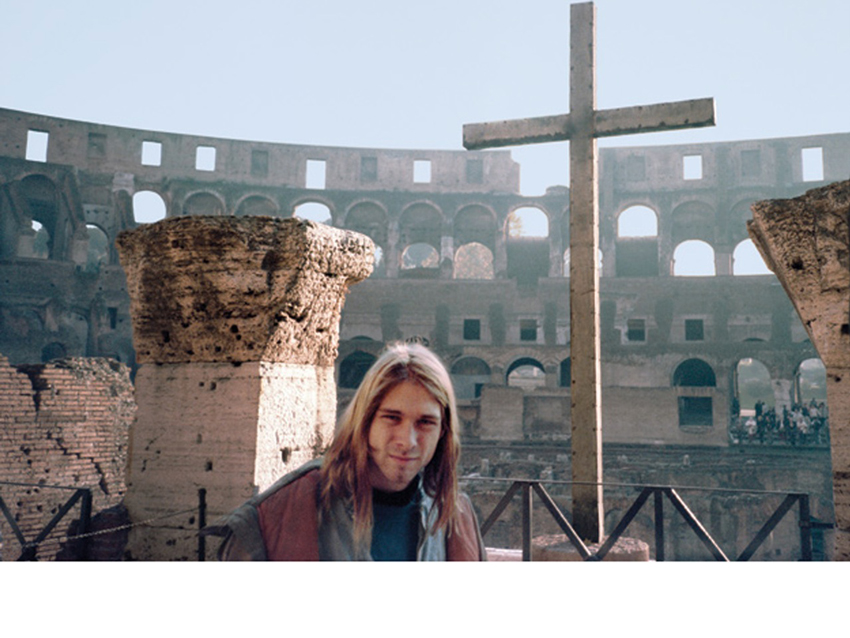
Sub Pop's Bruce Pavitt talks Experiencing Nirvana
In his upcoming book, Experiencing Nirvana: Grunge In Europe, 1989, Bruce Pavitt, who co-founded Sub Pop Records with Jonathan Poneman, recounts the groundbreaking and, at times, tumultuous eight days that he and Poneman spent on the road with Nirvana, Mudhoney and Tad in Europe just before grunge exploded upon the world.
In a week's time, Poneman saw Nirvana almost break up following a difficult show at the Piper Club in Rome, Italy, just days before the band would win over the British press at the LameFestUK show held at the 2,000-capacity Astoria Theater in London, a gig that helped set the stage for their impending worldwide popularity.
Below is a first chapter excerpt from Experiencing Nirvana, and on the following pages MusicRadar speaks to Pavitt. (You can order Experiencing Nirvana: Grunge In Europe, 1989 here.)
Monday, November 27
Piper Club, Rome
Jon and I arrived in Rome to connect with two of the new Seattle groups we were working with: Nirvana and Tad. Our mission was to assist in any way possible prior to their big Sub Pop showcase in London (LameFest UK), where they were to perform with their headlining labelmates Mudhoney. The British media was notorious for launching music careers, and we hoped that this event would be a defining moment for the artists.
In particular, we were concerned about Kurt Cobain, singer for Nirvana, as we had heard that he was feeling resigned and homesick and was suffering from exhaustion. Jon and I were hoping to help raise his spirits with a show of support. Everyone knew that it was crucial for the bands to arrive in London in good shape, as the three-band LameFest UK was by far the biggest show of the tour, with the potential to have a huge impact via the influential British press…
The Tad band got onstage and started their aggressive, lumbering set, showcasing tracks from their debut album,God’s Balls. Taunting the crowd, bass player Kurt Danielson fell into the audience, yelling, “Fuck the Pope!” while drummer Steve Wied kept the beat. After 40 minutes of provoking the Rome citizenry, the world’s heaviest band then retired upstairs to recuperate.
Nirvana’s turn was next… Ten songs into their set, Kurt, frustrated with his guitar, smashed it completely and climbed a tall stack of speakers. The crowd looked on, with many drunk spectators yelling “Jump!” It was a dramatic moment, potentially harmful. I witnessed the event from the club floor, stunned, while Jon and Tad looked down from the artists’ area on the second floor. Everyone was holding their breath, not sure if Kurt would actually jump. We were panicked, and extremely concerned for Kurt’s well-being.
Reprinted from the book EXPERIENCING NIRVANA: Grunge in Europe, 1989, by Bruce Pavitt, with permission by Bazillion Points Publishing.
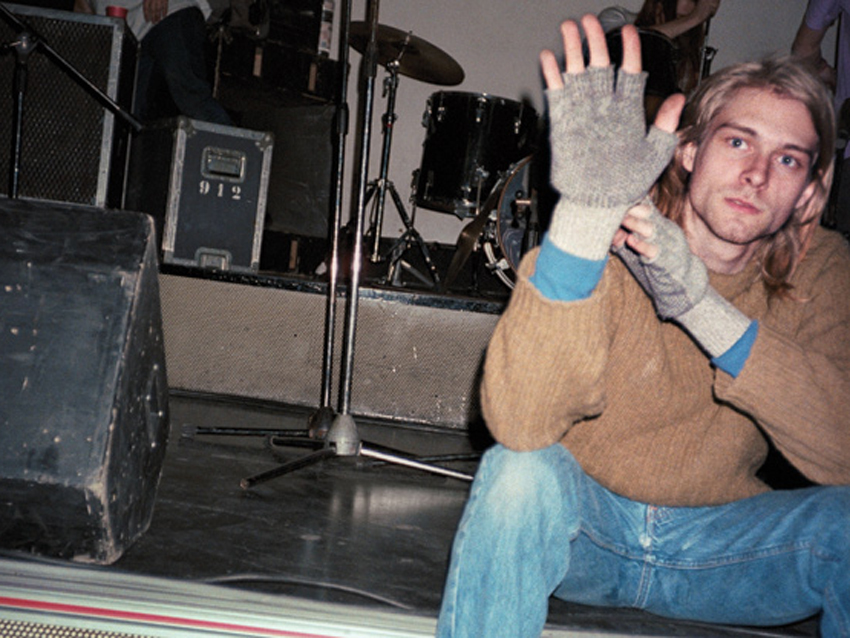
Sub Pop's Bruce Pavitt talks Experiencing Nirvana
The pictures in the book are remarkably intimate and capture a real innocence about the bands and the period. Had you looked at the shots a lot over the years?
“You know, I kind of stepped away from it all, particularly after Kurt’s passing. It took me a while to revisit that period and look at those pictures, longer than I thought it would, actually. I was aware of the collection, but they pretty much stayed in the attic for a long time. It was only in the past few years that I decided to flip through the images. I was particularly taken with the cover photo of Kurt at the Coliseum. It’s such an iconic, powerful image. I started to look through the other photos, and I thought, ‘There’s a story here.’
“It was a special time, that tour. Seeing the bands play in a different country ever night, pretty much, was thrilling. To see the consistently positive response from the different cultures was really empowering.”
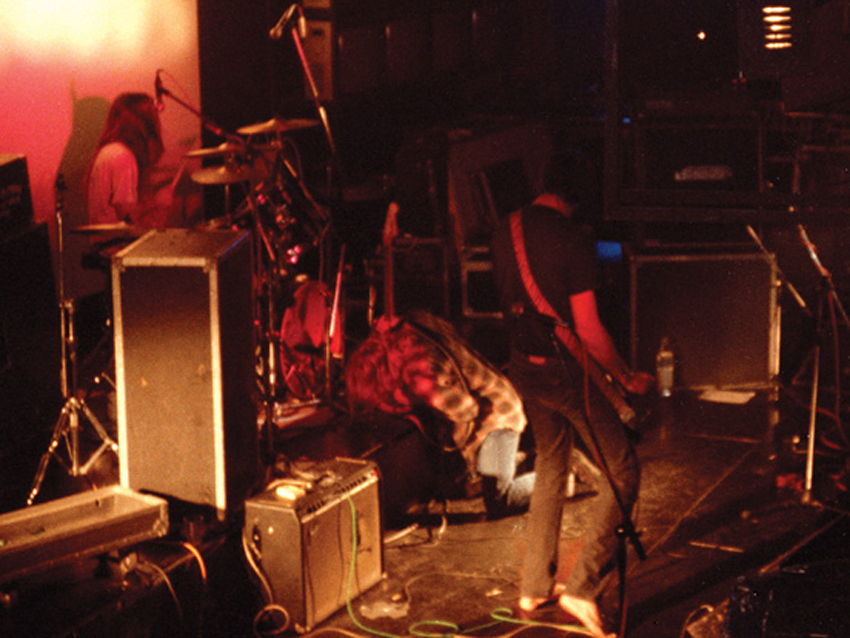
Sub Pop's Bruce Pavitt talks Experiencing Nirvana
I listened to the Astoria ’89 show last night –
“Ahhh. Yeah, I’ve only heard a couple of tracks from the live Nirvana Muddy Banks CD. I’ve never actually tracked down the full show. What I heard on that CD, especially Polly, were ripping.”
Absolutely. Were you at the show they did two years later?
“No, I wasn’t.”
Quite a difference. I watched that video to compare the shows. The second time there, it seemed as if the band were already conquering heroes; the first time, they came on like a band with everything to prove.
“Yeah, well, they were that, the band with everything to prove. But I have to say, before that, in the six weeks of touring Europe, they had really nailed some of those tunes. Kurt was really coming into his own as a songwriter at this time, too. Some of the post-Bleach tracks were pretty great. I like the song Been A Son, which they released right before they went on tour. I love that one. Polly is awesome, of course. You could see that Kurt’s songwriting was getting a little more stripped down, a bit more hypnotic.”
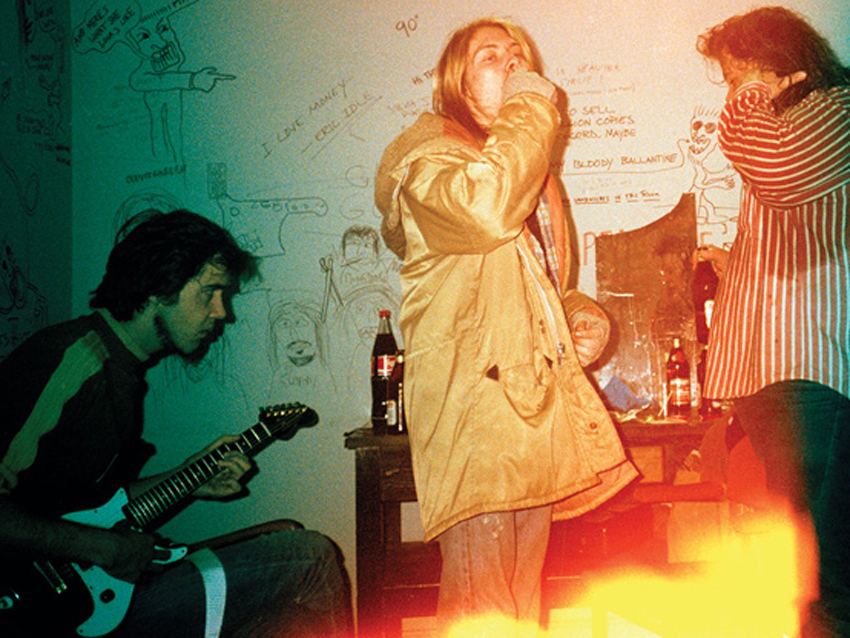
Sub Pop's Bruce Pavitt talks Experiencing Nirvana
Breaking the band in England was a real mission for Sup Pop.
“Well, yes. At the time, the most influential music media was in England, and it was also more accessible. You had three competing music weeklies that were always looking for new material. If you were an American band that could get to the UK, there was a good chance you’d get some ink. In the States, there were the regional weeklies, but everything was spread out so much.
“Trying to get covered in Rolling Stone was next to impossible. But trying to get something in New Music Express? Doable. That was our strategy. We had a UK publicist, Anton, who helped set a lot of that up, and we really felt that getting three of our best live acts together would really do the trick. We had done that previously, in June of ’89, at the Seattle LameFest, and that went over extremely well, so we decided to bring it over to London and try to convince the critics that Seattle had a happening scene.”
You wrote about Nirvana almost breaking up after the show at the Piper Club in Rome. How serious did it actually get?
“We really thought Nirvana were going to break up. The reason why we took a last-minute detour to Rome was because we heard that Kurt was suffering from nervous exhaustion. He was fried; he had just reached the end of his rope. If you see pictures of the van in the book, now imagine nine people with instruments in there, plus merch. That’s tight. One of those guys weight 300 pounds, and another guy was six foot four. Squeeze all of those guys in a van and crisscross Europe for six weeks – that’s enough to break up any band.
“In really thinking it through, I’m amazed the bands did as well as they did. But when we witnessed the Rome show, Kurt had reached the breaking point, so there was a big question mark. We knew that the length of the show was the biggest opportunity the band ever had, so we just did everything we could to get ‘em out there.”
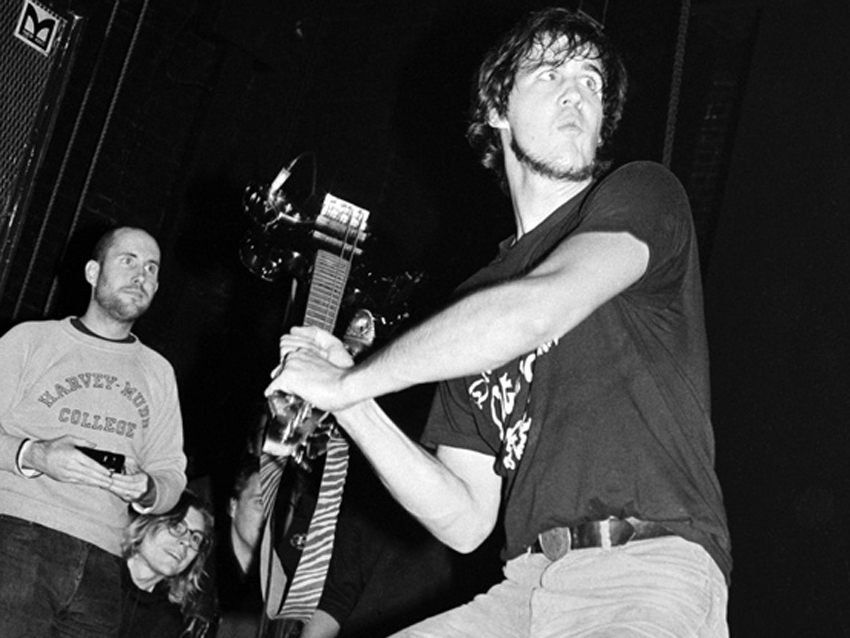
Sub Pop's Bruce Pavitt talks Experiencing Nirvana
You write about the first time you met Kurt – at his apartment, when you didn’t even know he was in a band. You mention that there was a Queen poster on one of the walls. That would surprise a lot of people.
“Yeah, there was the Queen poster and a Rolling Stones poster, too. His girlfriend at the time, Tracey, was wearing a Melvins T-shirt. They were both part of the Northwest indie-punk-underground scene, so the Queen and Rolling Stones posters opened my eyes a little bit, like, ‘Huh, that’s interesting.'"
But they weren’t up there ironically.
“They weren’t there ironically, no. I think he really represented an amalgamation of underground and pop sensibilities.”
Did Kurt or the other guys Nirvana ever mention anything about hair metal bands? In ’91, they would go a long way to putting those groups out of business.
“I don’t remember that directly, but I would assume they would have talked about those bands because they came from a punk culture. I do remember, however, and I think this is worth noting, in ’88, when we first started working with the band, I went over to Novoselic’s and he had a Jane’s Addiction record in his collection. I really saw that band as being a missing link between the LA Strip bands and the alternative scene. It was the one LA band that did tend to get played at house parties and stuff in the region at that time. Other than that, there was certainly a general disdain for corporate hair rock.”
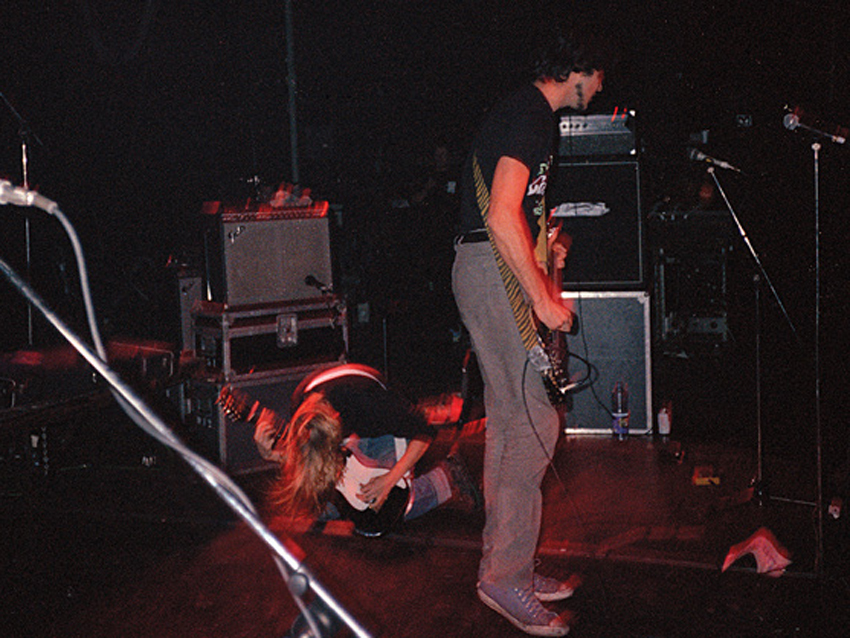
Sub Pop's Bruce Pavitt talks Experiencing Nirvana
I do recall an interview with Kim Thayil at the time. He was calling into question bands that wore cowboy boots and went to strip clubs.
[Laughs] “Yeah, exactly. And as an aside here, I would say that when Soundgarden came on the scene here, Chris Cornell had such a pitch-perfect voice and was such a classic rock star out of the box, so some people in the underground culture felt a little uncomfortable with the band. They were almost too polished. But I think Thayil’s guitar playing, which was influenced more by bands like Scratch Acid and Butthole Surfers, provided a nice balance.”
You and Jonathan signed Nirvana for 600 bucks and a promise. What was the general plan? Was there one?
[Laughs] “I would have to say, personally, my whole attitude was ‘Let’s put out some cool records by our friends.’ My background was as an indie music advocate – I had a radio show, a Sub Pop fanzine and column. I was all about supporting local scenes. We would occasionally joke about world domination because it was such a ridiculous concept. I think that Jon had grander business designs, and that’s one of the reasons why Sub Pop flourished, because he and I saw things differently. We tended to complement each other.
“With Nirvana, we put out a single that came out well, so we said, ‘Let’s put out an album.’ Then it was ‘Geez, this is really moving.’ As an indie label, you’re riding by the seat of your pants. You want to put out cool records, but you’re also getting a feel for what people are interested in. As the feedback comes in, you’re certainly motivated to raise the capital for the next record. By the time that Bleach had been out for a few months, we were dead set on putting out as much Nirvana material as possible. We did put out a couple more singles, and we were slated to put out what became Nevermind, but that was not to happen, probably best for the band and, in some ways, probably best for us, too.”
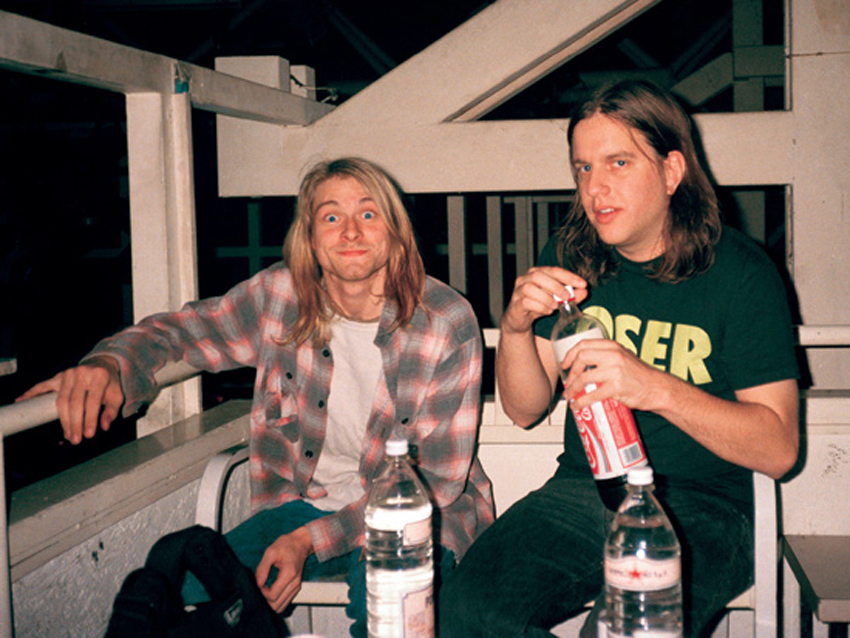
Sub Pop's Bruce Pavitt talks Experiencing Nirvana
Going back to the tour, which city was the toughest crowd?
“That’s hard to say. I only saw five shows, but I would say maybe Rome. I know that they had issues with the crowd, and that was one of the reasons why Kurt went into meltdown mode, too. He very famously stated after the show that he looked out into the crowd and he saw the faces of the kinds of people who used to beat him up in school, or wanted to beat him up. I think there might have been a little more testosterone in the room than in the UK, for example.”
Our hindsight view of Kurt grows each year. We now tend to regard him as being akin to John Lennon in many ways: the conflicted, contradictory artist, wanting fame and hating it at the same time. What did you think of him at that time, back in ’89?
"It is exaggerated with hindsight, due to his popularity and mythic status. But he tended to keep to himself pretty much. He wasn’t nearly as social as the other musicians we were working with. I know that he was passionate about championing outsider artists; you’d later see him wearing Daniel Johnston T-shirts, which would be a perfect example.
“At the same time, he did have those Queen and Rolling Stones posters in his apartment. I think, on some level, he was trying to find the middle ground between pop and punk. He wrestled with that, I would say, since I first met him.”

Joe is a freelance journalist who has, over the past few decades, interviewed hundreds of guitarists for Guitar World, Guitar Player, MusicRadar and Classic Rock. He is also a former editor of Guitar World, contributing writer for Guitar Aficionado and VP of A&R for Island Records. He’s an enthusiastic guitarist, but he’s nowhere near the likes of the people he interviews. Surprisingly, his skills are more suited to the drums. If you need a drummer for your Beatles tribute band, look him up.
“I feel like that song had everything we needed to come back with”: Bring Me The Horizon’s Lee Malia on Shadow Moses, its riff and the secrets behind its tone, and why it was the right anthem at the right time
“I said, ‘Are we sure we can write a song about death?’”: The story of Mike + The Mechanics' classic No.1 The Living Years
“I feel like that song had everything we needed to come back with”: Bring Me The Horizon’s Lee Malia on Shadow Moses, its riff and the secrets behind its tone, and why it was the right anthem at the right time
“I said, ‘Are we sure we can write a song about death?’”: The story of Mike + The Mechanics' classic No.1 The Living Years









